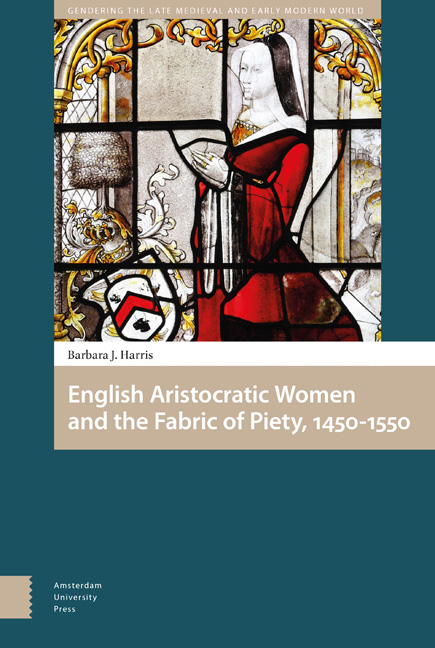Book contents
- Frontmatter
- Dedication
- Contents
- Abbreviations
- Illustrations
- Acknowledgements
- Preface
- Introduction
- 1 Tombs: Honoring the Dead
- 2 Chantries: The Quest for Perpetual Prayers
- 3 Building for the Congregation: Roofs, Aisles, and Stained Glass
- 4 Adorning the Liturgy: Luxury Fabrics and Chapel Plate
- 5 Almshouses and Schools: Prayers and Service to the Community
- 6 Defining Themselves
- 7 Epilogue: Destruction and Survival
- Conclusion
- Appendix 1 Patrons of the Fabric of the Church
- Appendix 2 Patrons of Tombs
- Appendix 3 Location of Tombs in Churches
- Appendix 4 Choice of Burial Companion
- Appendix 5 Women Who Commissioned Chantries
- Appendix 6 Commissions of Stained-Glass Windows
- Appendix 7 Additions or Major Repairs to Churches
- Appendix 8 Bequests of Vestments
- Appendix 9 Patrons of Almshouses or Schools
- Glossary
- Select Bibliography
- Archival Sources
- Index
7 - Epilogue: Destruction and Survival
Published online by Cambridge University Press: 11 December 2020
- Frontmatter
- Dedication
- Contents
- Abbreviations
- Illustrations
- Acknowledgements
- Preface
- Introduction
- 1 Tombs: Honoring the Dead
- 2 Chantries: The Quest for Perpetual Prayers
- 3 Building for the Congregation: Roofs, Aisles, and Stained Glass
- 4 Adorning the Liturgy: Luxury Fabrics and Chapel Plate
- 5 Almshouses and Schools: Prayers and Service to the Community
- 6 Defining Themselves
- 7 Epilogue: Destruction and Survival
- Conclusion
- Appendix 1 Patrons of the Fabric of the Church
- Appendix 2 Patrons of Tombs
- Appendix 3 Location of Tombs in Churches
- Appendix 4 Choice of Burial Companion
- Appendix 5 Women Who Commissioned Chantries
- Appendix 6 Commissions of Stained-Glass Windows
- Appendix 7 Additions or Major Repairs to Churches
- Appendix 8 Bequests of Vestments
- Appendix 9 Patrons of Almshouses or Schools
- Glossary
- Select Bibliography
- Archival Sources
- Index
Summary
Throughout the introductory discourse to his Ancient Funeral Monuments, John Weever bewailed the destruction that befell the English church during the reigns of Henry VIII and Edward VI. Of all the damage, “the foulest and most inhumane” in his view was the violation of funeral monuments. He noted in despair that even Elizabeth I's proclamation against the “breaking or defacing of monuments of antiquity … for memory, and not for superstition” did not stem the fury of the “willful sectaries”, who continued to destroy and deface them.
Weever is one of the best known of the Elizabethan and early Stuart antiquarians who, along with John Stowe, William Camden, and William Dugdale, dedicated themselves to stemming the tide of destruction that swept the English church in the sixteenth and seventeenth centuries. In their fear that time and religious change would further the destruction of tombs, windows, and whole buildings, they recorded as many epitaphs and arms as they could. Conservative by temperament and often by religious conviction as well, they idealized the pre-Reformation church and the sense of community they associated with it. They were also committed to the social hierarchy embodied in the monuments they sought to preserve. Dugdale, appointed a herald in 1640, had an additional motive. Convinced that war between king and parliament was imminent, he undertook an emergency tour of England with a skilled arms painter, William Sedgwick, to record the epitaphs and arms on tombs, painted glass, and sculptural ornaments that formed the basis of the heralds’ work.
The impact of government-sponsored attacks on whole categories of religious institutions—monasteries, colleges, and chantries—and, in the Edwardian period, on religious imagery in general, is hard to overestimate. Little could be done to save monuments located in religious houses slated for destruction. Few efforts to purchase the monasteries in which they were located from the Crown succeeded. In 1536, for example, Thomas West, Lord de la Warr, wrote to Cromwell on behalf of Boxgrove Priory, where his ancestors were interred and in which he had already built a chapel for his own burial. When his petition failed, he constructed another tomb at Broadwater, Sussex, where his stepmother had built a monument for his father (1525) and where she asked to be buried in her will (1536).
- Type
- Chapter
- Information
- English Aristocratic Women's Religious Patronage 1450-1550 , pp. 135 - 150Publisher: Amsterdam University PressPrint publication year: 2018



